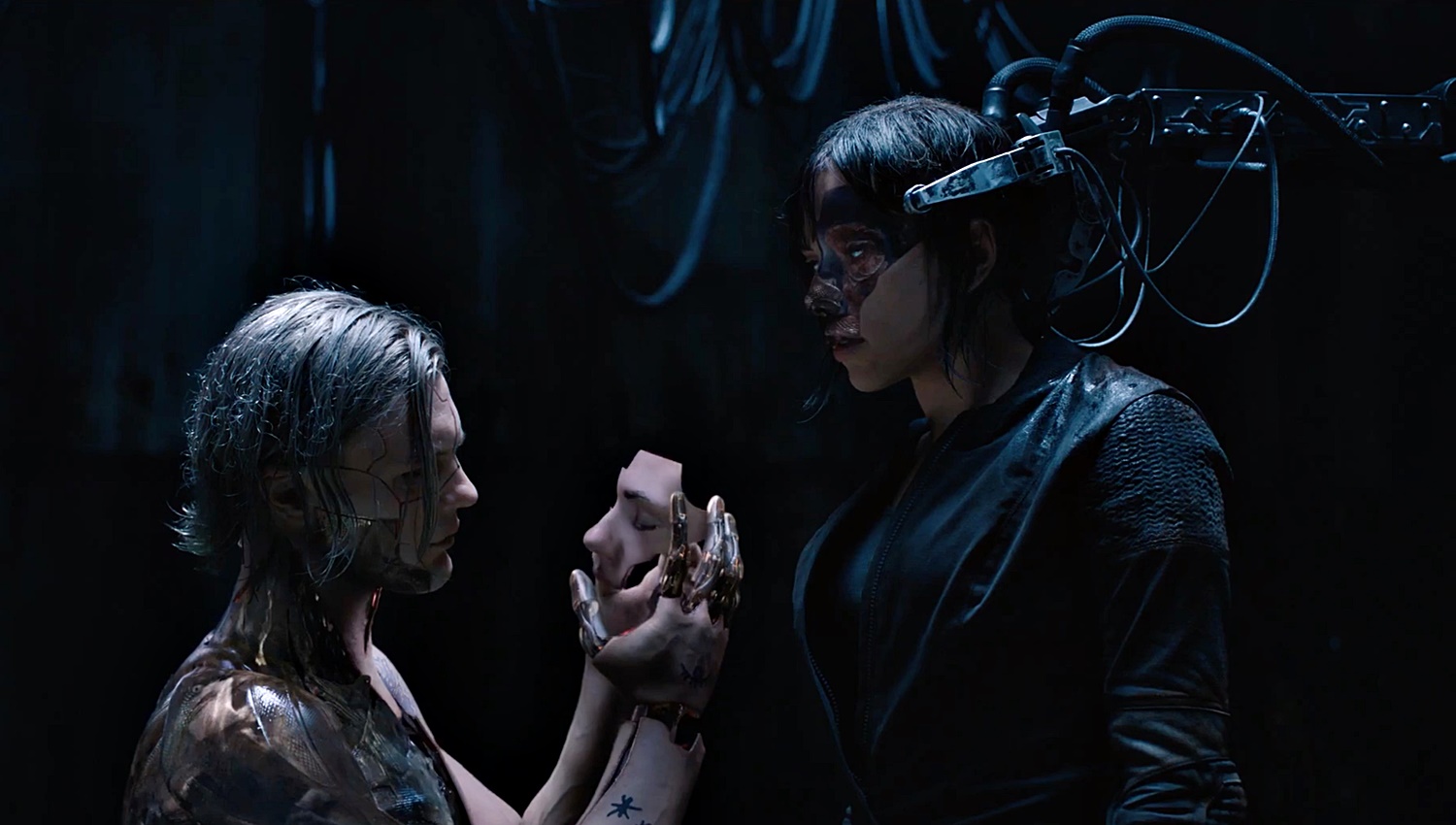
Ghost in the Shell
Dustin Chase
Stories like Ghost in the Shell are comic book and animated presentations for a reason. Their futuristic imagination is often beyond the capabilities of feature film, or certainly the creative ingenuity of what can and more importantly should be adapted into live action. Sadly, the lines of what is live action (real) and what is effect (or animation to belittle the concept) has become so blurred that I wonder why even bother with taking something like Ghost in the Shell, a cult classic anime and convert it to a movie. What we have here is basically just Scarlett Johansson’s name value along with her floating head digitally attached to a CGI body. Both Oscar winning Ex Machina and Ghost in the Shell are science fiction films about future advancements with robots and that impact on humanity. One has a tiny amount of special effects and a lot of realism while the other, exactly the opposite, almost entirely green screened with a small amount of tangible material.
She is the first of her kind, Major (Johansson) has a human brain, but her body is a synthetic shell, a human robot transplant. The company responsible for the technology is Hanka Robotics, deep into the future of our world, technology has consumed everything. Public Security is maintained by Section 9, Major is the leader of this branch as her near limitless abilities make a deadly and proficient weapon. She isn’t without glitches, flickers from her human life suggest a past she can’t remember. Dr. Ouelet (Binoche) created Major, and thinks of her like a daughter. Kuze (Pitt) is a discarded experiment that intends to reveal the deception of the Hanka by bringing violent retribution to the company and any agent that gets in his way.
With the amount of special effects used, it’s impossible to appreciate any particular aspect of it.
Director Rupert Sanders (Snow White and the Huntsman) takes a lot of cinematic visual ques from The Matrix and Men in Black. The look of the film, futuristic cities, weapons and vehicles are a culmination of junky science fiction clutter. It looks like the inside of a pinball machine without much sophistication or creativity. Unless two characters are simply having a conversation, what you see is computer generated, which doesn’t invite emotional investment in the characters or their plight. Due to the amount of special effects used, it’s impossible to appreciate any particular aspect of it. Dogs are apparently the only thing from the world we know that have survived this futuristic progression. Fight scenes are anything but impressive, using the Matrix coined style of stop motion, or slowed pace impact we’ve seen for decades, become a redundancy in action films.
As much controversy that was made on Johansson’s white-wash casting in an Asian role, it’s clear the Chinese producers wanted a top billed American name to front the presumable franchise (i.e. Matt Damon in The Great Wall). Johansson like Damon, isn’t being employed for her acting talent, instead the shape of her body and the marquee name, anyone could have played this part. When Michael Pitt’s character arrives, and explains his purpose, we see the narrative shift into a Resident Evil story where the corporation created something they can’t control and now must destroy it. The plot is so formulaic and simple, the only thing Ghost in the Shell ever had going for it was the special effects which compared to similar action/comic book based adaptations simply doesn’t stand out nor is it worth remembering.
Final Thought
Insignificant in the realm of both science fiction and comic book film genres.
